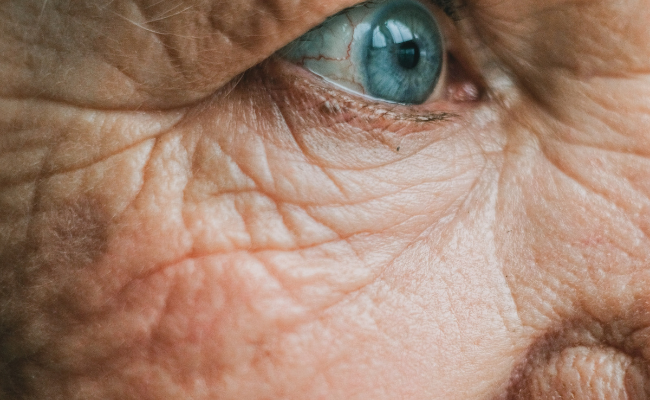How to Treat Wrinkles?
- November 09, 2023
- No Comments

What Are Wrinkles?
Wrinkles are a natural part of the aging process and are a common concern for many people. They are lines and creases that develop in the skin over time, most often on the face, neck, and hands. Wrinkles can be caused by a variety of factors, including aging, sun exposure, smoking, and genetics. As we age, our skin naturally loses some of its elasticity and moisture, making it more prone to developing wrinkles.
Why Do Wrinkles Occur?
Understanding why wrinkles occur is essential in finding effective ways to treat and prevent them. There are several key factors that contribute to the formation of wrinkles:
- Aging: The primary cause of wrinkles is the natural aging process. As we get older, the production of collagen and elastin, two proteins that help maintain the skin's elasticity and smoothness, decreases. This leads to a loss of skin firmness and the development of wrinkles.
- Sun Exposure: Prolonged and unprotected sun exposure is a major contributor to premature aging and wrinkles. Ultraviolet (UV) rays from the sun can damage the skin's collagen and elastin fibers, resulting in sagging skin and wrinkles.
- Smoking: Smoking is known to accelerate the aging of the skin. It reduces blood flow to the skin, depletes the skin of essential nutrients, and damages collagen and elastin, all of which contribute to the formation of wrinkles.
- Genetics: Some people may be genetically predisposed to developing wrinkles earlier or more prominently than others. Family history can play a role in how and when wrinkles appear.
- Facial Expressions: Repetitive facial expressions, such as squinting, frowning, or smiling, can cause dynamic wrinkles. Over time, these expressions can lead to permanent lines and creases in the skin.
How Can Wrinkles Be Treated?
Treating wrinkles involves a combination of preventive measures and medical or cosmetic procedures. Here are some common ways to treat wrinkles:
- Topical Skincare Products: Many over-the-counter and prescription skincare products are available to help reduce the appearance of wrinkles. These products often contain ingredients like retinoids, antioxidants, and peptides that can stimulate collagen production and improve skin texture. Regular use of these products can be effective in reducing fine lines and wrinkles.
- Sunscreen: The most effective way to prevent sun-related wrinkles is to use sunscreen daily. It is crucial to protect your skin from harmful UV rays by applying a broad-spectrum sunscreen with an SPF of at least 30. This can help prevent further damage and reduce the risk of new wrinkles forming.
- Lifestyle Changes: Quitting smoking and adopting a healthy lifestyle can have a significant impact on wrinkle prevention and treatment. Smoking cessation can slow down the aging process, while a balanced diet and regular exercise can promote overall skin health.
- Dermal Fillers: Dermal fillers, such as hyaluronic acid and collagen, can be injected into the skin to fill in wrinkles and fine lines. They plump up the skin and provide a smoother appearance. The results are usually temporary and may require periodic touch-ups.
- Botulinum Toxin (Botox): Botox is a neurotoxin that can temporarily paralyze the muscles responsible for certain wrinkles, such as crow's feet and frown lines. By relaxing these muscles, Botox can smooth out the skin's appearance. The effects typically last for several months.
- Chemical Peels: Chemical peels involve applying a chemical solution to the skin to remove the top layer, revealing a smoother, less wrinkled layer underneath. They can be effective in treating fine lines and improving skin texture.
- Microdermabrasion: This non-invasive procedure uses a machine to exfoliate the top layer of skin, which can reduce the appearance of fine lines and wrinkles. Microdermabrasion promotes collagen production and helps the skin look rejuvenated.
Treatment Solutions for Wrinkles:
- Combination Therapy: Many individuals find the best results by combining different treatment options. For example, using topical skincare products in conjunction with injectable fillers or Botox can yield a more comprehensive and longer-lasting outcome.
- Customized Approach: It's important to note that not all wrinkles are the same, and the best treatment for one person may not be suitable for another. A customized approach, often recommended by a dermatologist or skincare professional, can target specific concerns and achieve the best results.
- Regular Maintenance: Wrinkle treatment is not a one-time solution; it often requires ongoing maintenance. Procedures like Botox and dermal fillers need periodic touch-ups to maintain their effects. Consistent use of skincare products and sun protection is also essential for long-term results.
Benefits of Wrinkle Treatment:
- Improved Self-Confidence: One of the most significant benefits of wrinkle treatment is the boost in self-confidence that it can provide. Many people feel more satisfied with their appearance when wrinkles are reduced or eliminated.
- Youthful Appearance: Wrinkle treatments can help restore a more youthful appearance by smoothing out fine lines and wrinkles. This can make individuals look and feel younger, which can positively impact their personal and professional lives.
- Prevent Further Damage: Preventive measures and wrinkle treatments can help protect the skin from further damage. By addressing the root causes of wrinkles, such as sun exposure and smoking, individuals can minimize future wrinkles.
- Non-Invasive Options: Many wrinkle treatments are non-invasive or minimally invasive, allowing individuals to achieve noticeable results without the need for surgery. This can reduce downtime and the risks associated with more invasive procedures.
Comments (0)